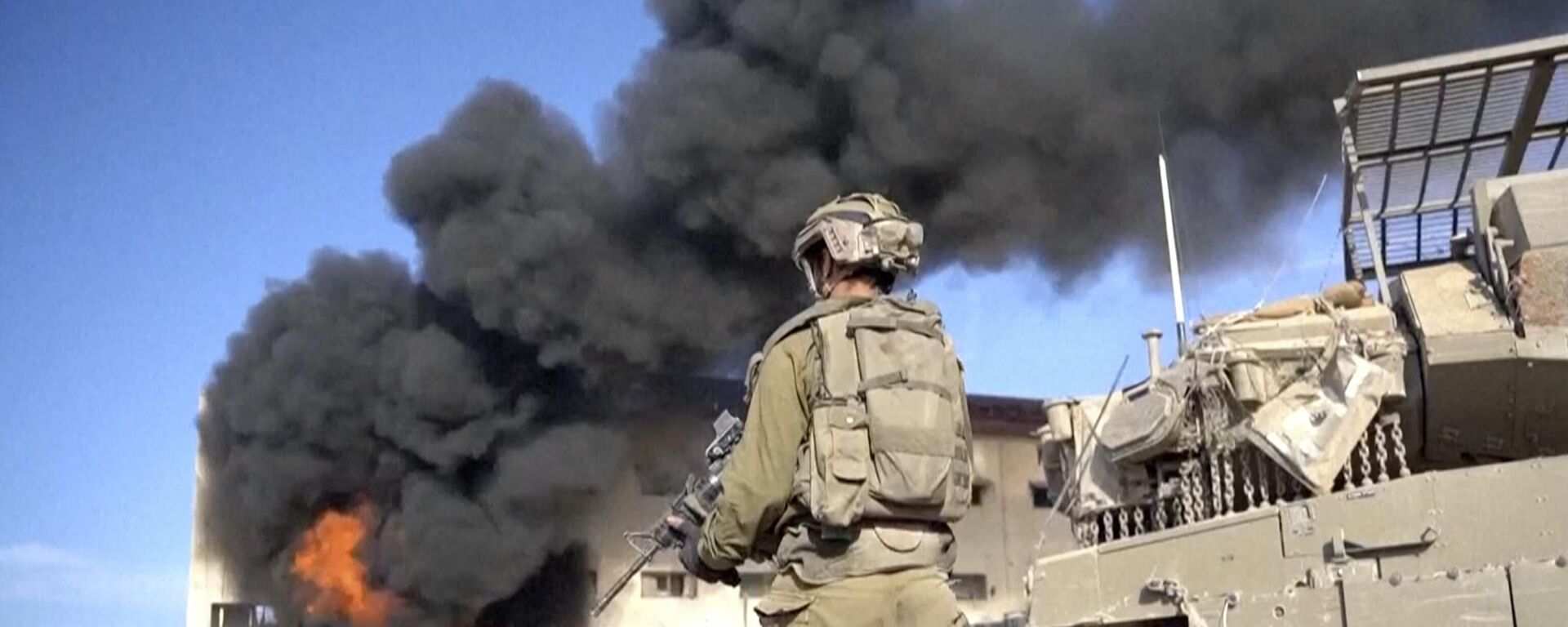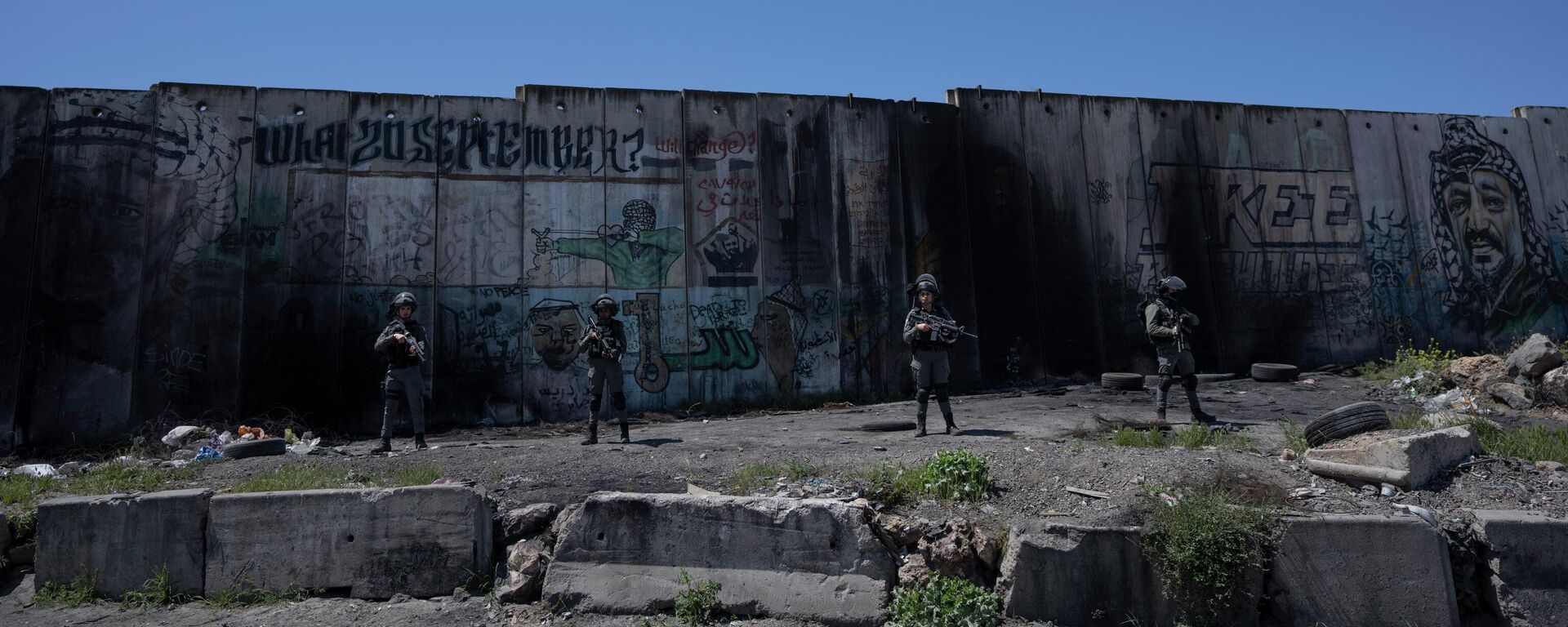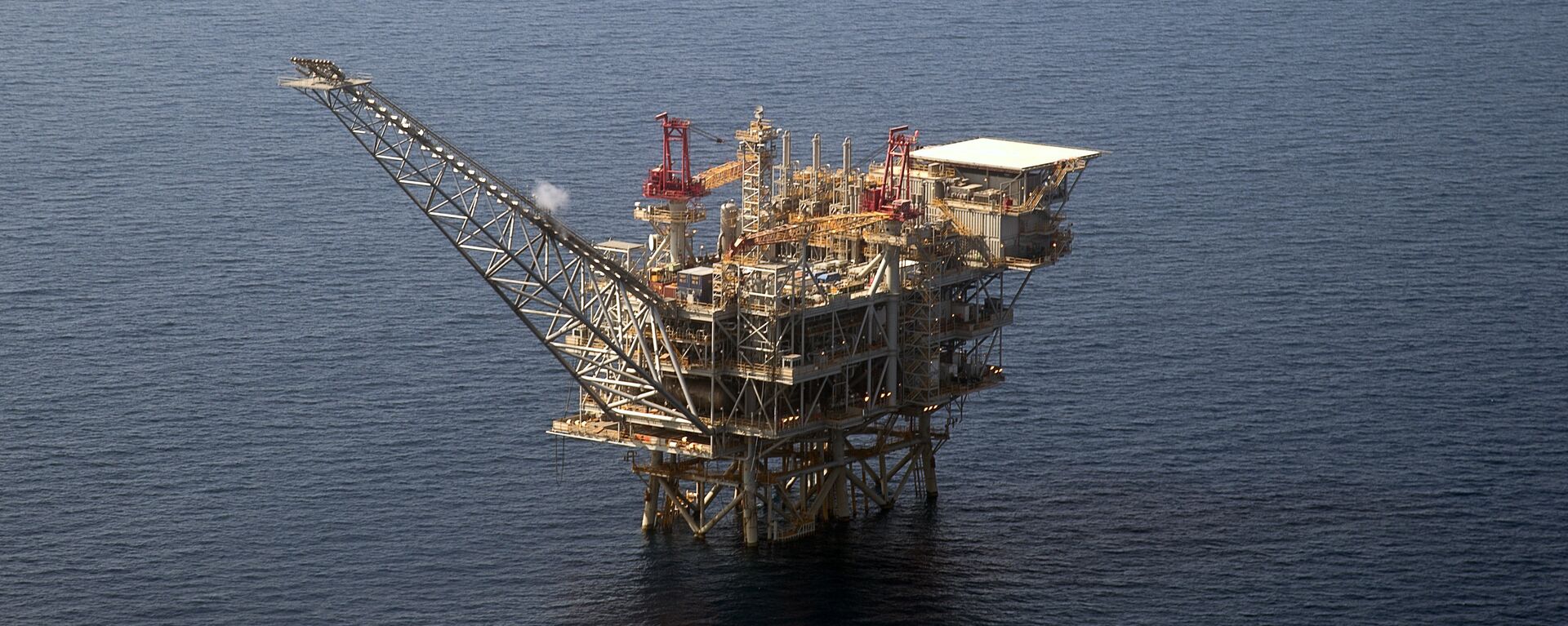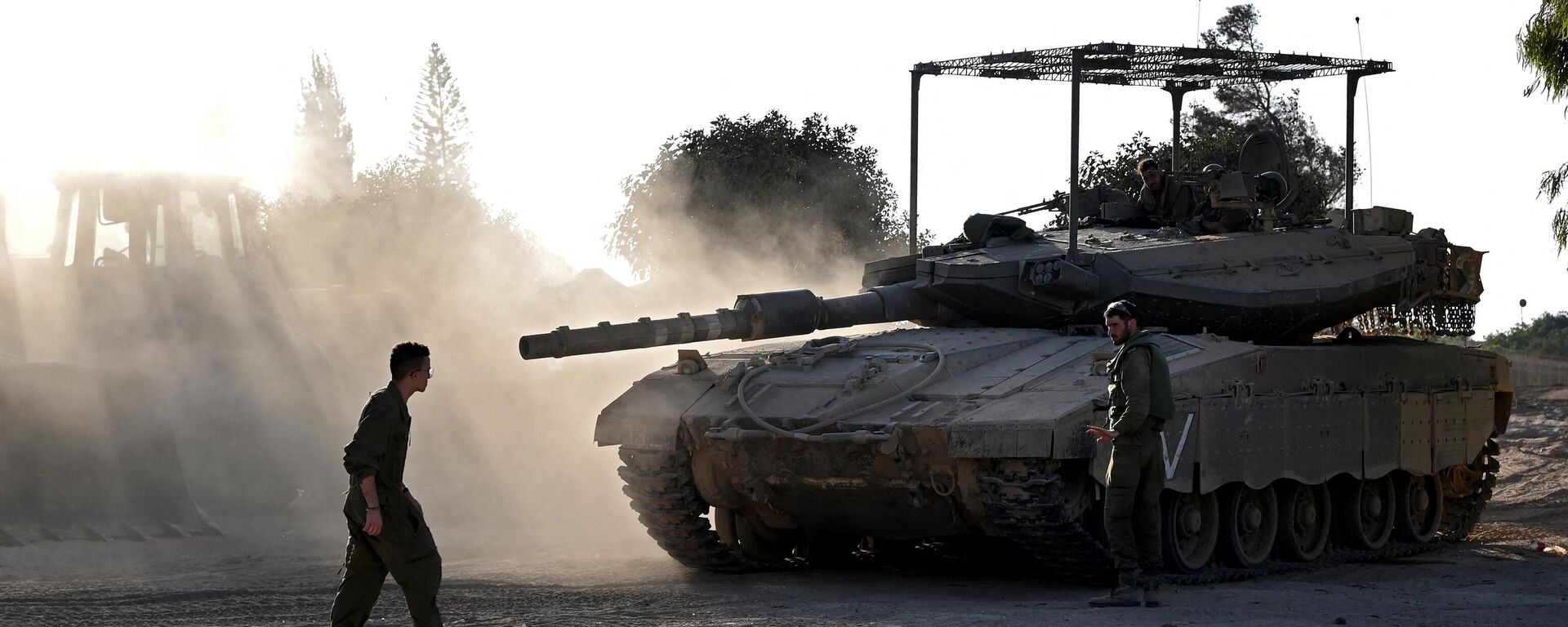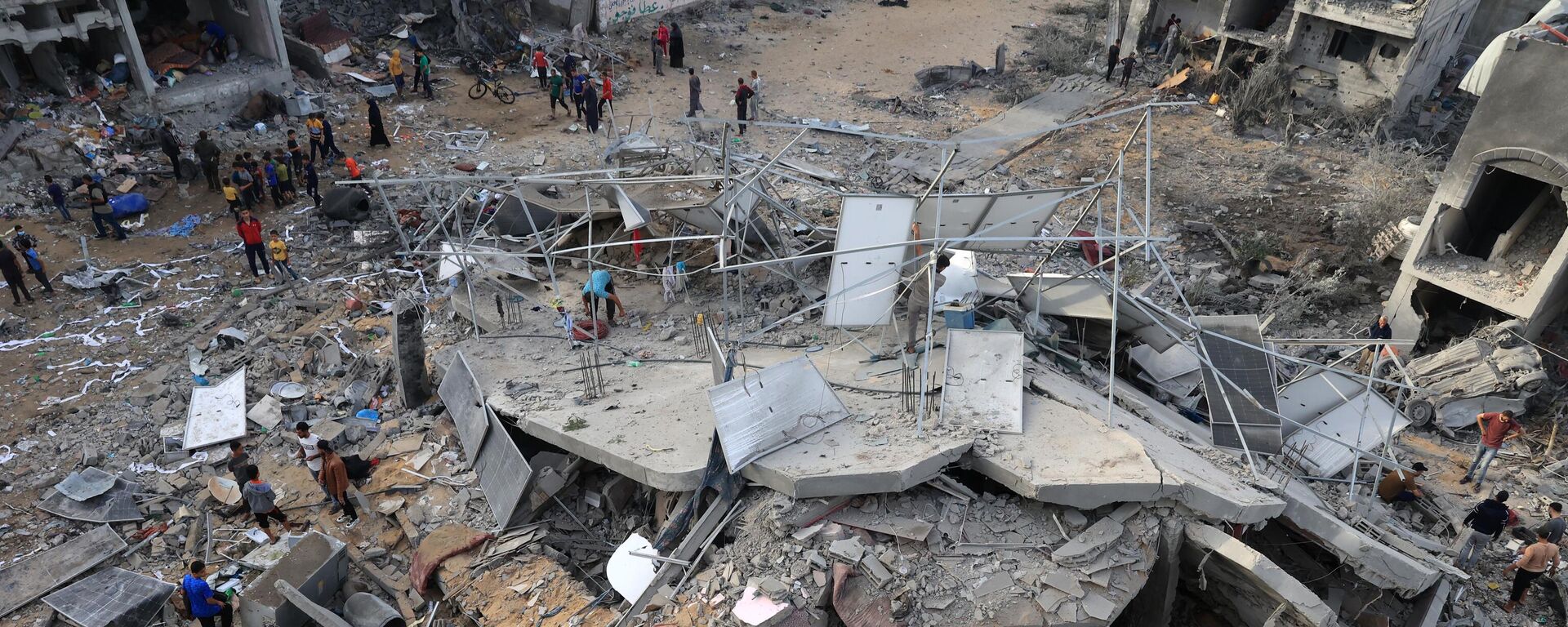What are Palestine's Exports, Imports and Trade Partners?
15:50 GMT 23.11.2023 (Updated: 10:27 GMT 30.01.2024)
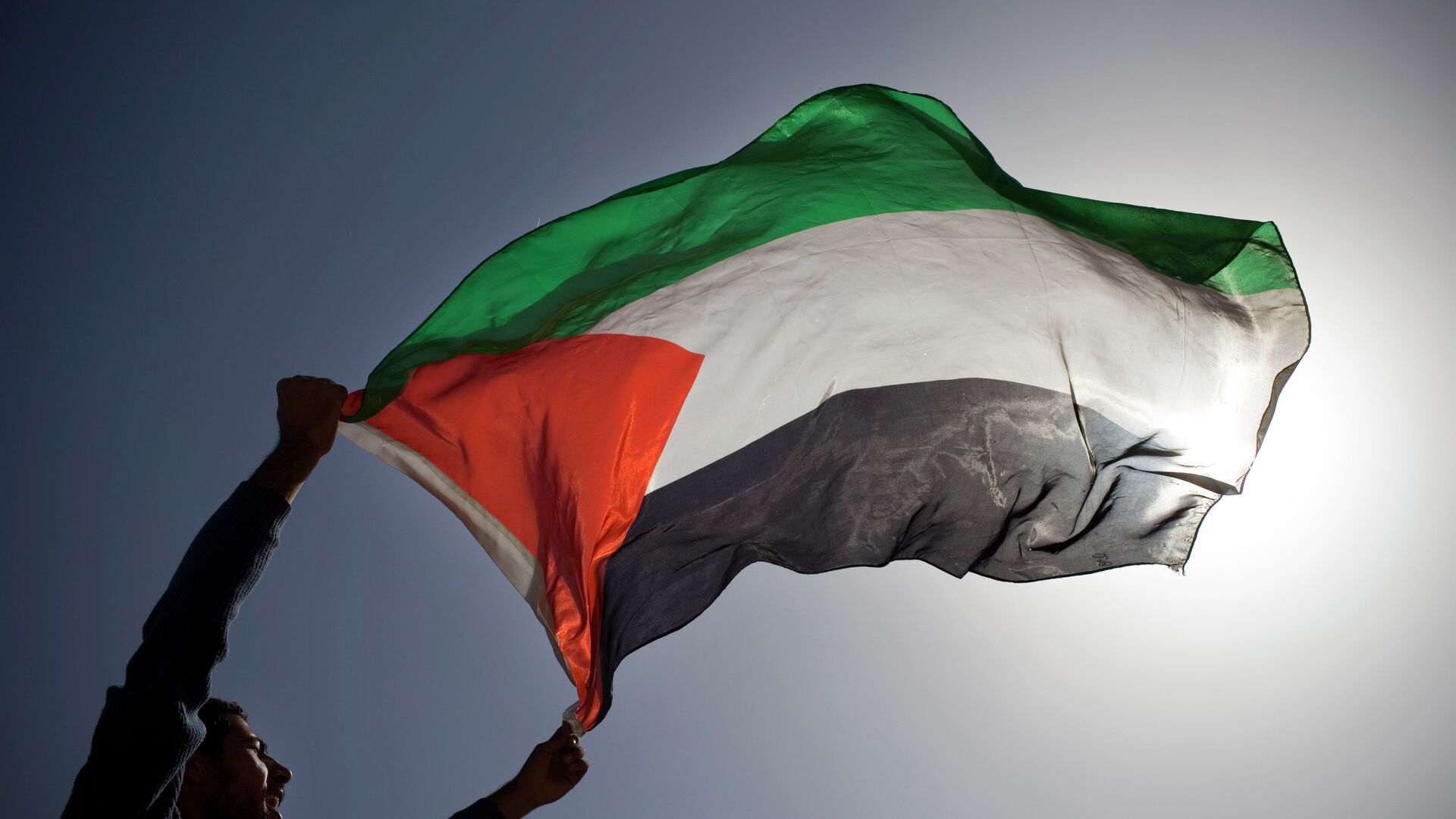
© AP Photo / Bernat Armangue
Subscribe
The raging Gaza war threatens to hinder the economic development of Palestine, a partially recognized state consisting of the Gaza Strip and West Bank.
While Palestine – a partially recognized state consisting of the Gaza Strip and West Bank enclaves – usually steals the headlines when geopolitical tensions rise, one might be surprised to know that it's also a land of industrious workers and talented businessmen.
Sputnik has looked into the economic indicators of the State of Palestine to find out what it buys and sells, and who its main trade partners are.
Palestine's Geography and Population
The State of Palestine was founded on November 15, 1988, when Yasser Arafat, then-chairman of the Palestine Liberation Organization (PLO), issued the Palestinian Declaration of Independence. So far, Palestine has been recognized by a total of 139 of the 193 UN member states, including Russia, China, Iran, and Turkiye. However, the US, major European powers, and their allies still hesitate to make the move, admitting, nonetheless, the Palestinian people's right to self-determination.
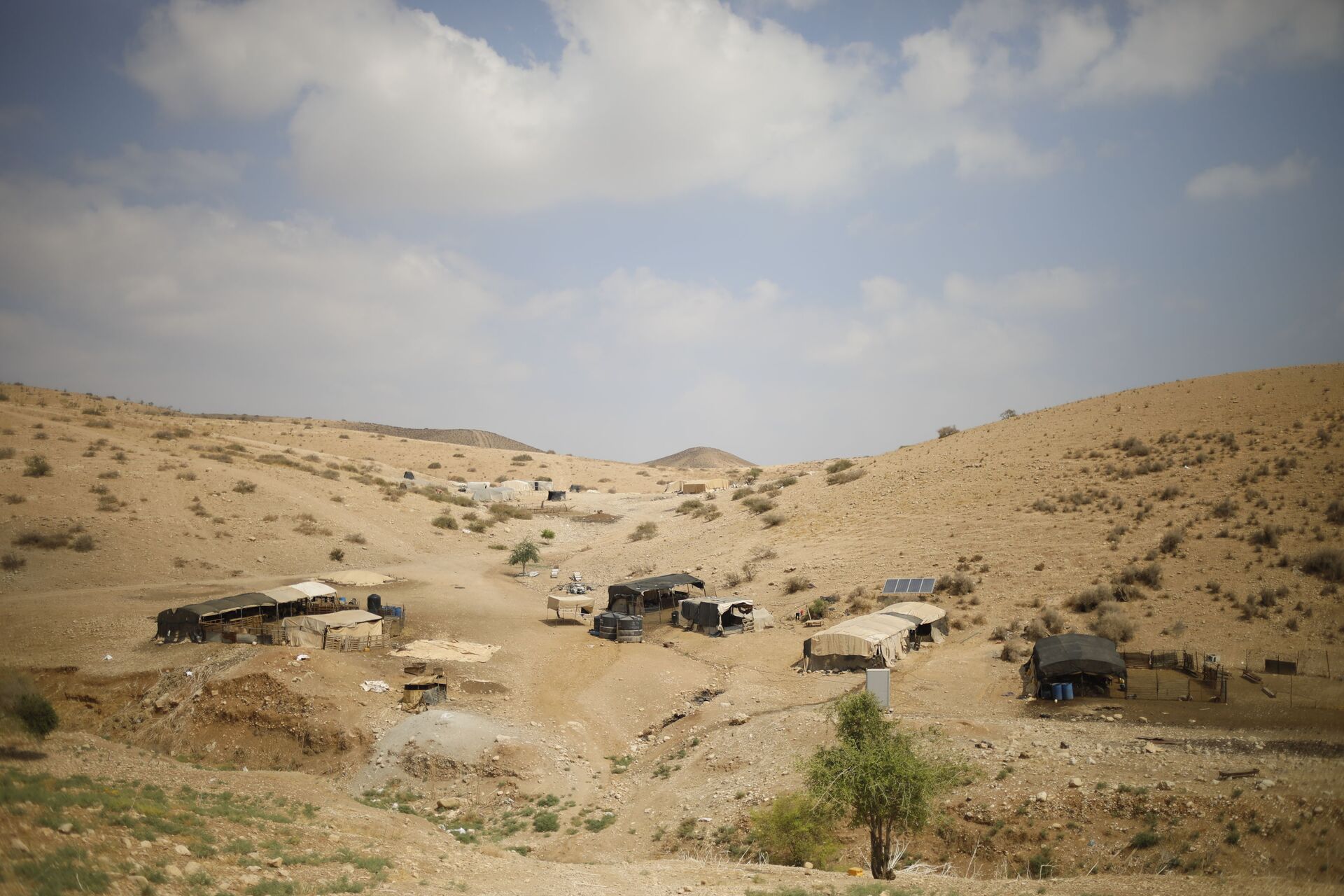
Palestinian Bedouin homes are seen in the Israeli-occupied West Bank, Wednesday, Sept. 11, 2019. Israeli Prime Minister Benjamin Netanyahu’s election eve vow to annex the Jordan Valley if he is re-elected has sparked an angry Arab rebuke and injected the Palestinians into a campaign that had almost entirely ignored them. (AP Photo/Ariel Schalit)
© AP Photo / Ariel Schalit
The combined area of the West Bank and Gaza Strip is 6,165 square kilometers, which is approximately one third of the area of the State of Israel. The West Bank is 5,800 sq. km in area, while the Gaza Strip is much smaller, amounting to just 365 sq. km.
The Gaza Strip largely consists of coastal plains and sand dunes. For its part, the landlocked West Bank features a whopping four topographic zones: fertile plains of around 400 sq. km (Jordan Valley); a rocky semi-arid area of 1,500 sq. km (the Eastern Slopes); the mountainous area of the Central Highlands, which is the largest zone of the region (3,500 sq. km); and a semi-coastal zone (400 sq. km).
The State of Palestine’s 2023 population is estimated at 5,371,230 people (with an annual growth rate of 2.4%), while its gross domestic product (GDP) was about $3,789 per capita in 2022, or $19.112 billion for the whole economy.
What Does Palestine Export?
In 2021, Palestine exported products worth $3.18 billion, according to the CIA World Fact Book. The export commodities included building stone, scrap iron, plastic lids, furniture, seating, dates, olive oil, and other agricultural products.
As per the TrendEconomy website, the state's export structure (2021) was represented by following major goods:
· 13.3% stone, plaster, cement, asbestos, mica, or similar materials;
· 11.7% furniture, bedding, mattresses, lamps and lighting fittings, and related items;
· 10.1% plastics;
· 9.13% iron and steel;
· 4.22% aluminum;
· 4.13% fruit and nuts;
· 3.33% salt, sulfur, earths, and stone;
· 3.32% animal, vegetable, or microbial fats and oils;
· 2.99% wood and articles of wood.
The list of main export destinations of the commodities includes 10 countries and is topped by Israel, which is by far Palestine's largest customer:
· Israel (86%)
· Jordan (5.12%)
· United Arab Emirates (1.45%)
· United States (1.13%)
· Saudi Arabia (around 1%)
· Turkiye (around 1%)
· United Kingdom (around 1%)
· Kuwait (less than 1%)
· Qatar (less than 1%)
· Germany (less than 1%)
Over the past several years, Palestine has sought to diversify its trade ties and reduce its dependence on Israel. In particular, the partially recognized Mideast state has signed a series of trade and business association agreements with the EU, US, Egypt, Russia, and Turkiye, and in recent years has expanded trade ties with Saudi Arabia, Qatar, and the United Arab Emirates. Palestinians have also been focused on developing new trade routes through the Mediterranean and Jordan.
For its part, the Palestinian Investment Promotion Agency (PIPA) has set a goal of developing new sectors of the economy as part of its broader national export strategy, including: tourism; food and beverages; agro-processed meat; pharmaceuticals; information and communication technology (ICT); and renewable energy, to name but a few.
What Does Palestine Import?
Palestine's imports are three times larger than its exports, and amount to $10.245 billion. The country mostly buys food, consumer goods, construction materials, petroleum, and chemicals.
In 2021, Palestine imported the following commodities:
· 16.3% mineral fuels, mineral oils and products of their distillation, bituminous substances, mineral waxes;
· 5.8% residues and waste from the food industry, prepared animal feed;
· 5.23% electrical machinery and equipment;
· 4.94% vehicles, parts and accessories;
· 4.22% pharmaceutical products;
· 4.18% plastics;
· 4.06% machinery and mechanical appliances;
· 3.81% iron and steel;
· 3.16% live animals;
· 3.04% salt, sulfur, earths, and stone.
When it comes to Palestine’s import sources, Israel again plays the first fiddle, with a 53% share of all imports. Thus, the list of Palestine’s top trading partners includes:
· Israel (53%)
· Turkiye (10.3%)
· China (6.79%)
· Jordan (3.28%)
· Germany (2.54%)
· Egypt (2.04%)
· Switzerland (1.73%)
· Italy (1.5% (118)
· United States (1.46%)
· Saudi Arabia (1.44%)
In addition, Palestine is highly dependent on Israel and its other neighbors in terms of energy. Palestinians import 86% of their electricity from Israel, Jordan, and Egypt (generating the remaining 14% locally), according to the International Trade Administration.
Meanwhile, the Jenin Power Plant, in Jenin Governorate in the northern West Bank, has yet to be completed. It was designed as a Combined Cycle Gas Turbine (CCGT) with a generation capacity of 450 megawatts. It is projected that it will be supplied by natural gas from the Gaza Marine gas field. The Jenin Power Plant is expected to satisfy 50% of Palestine's current total electricity consumption.
Conflicts and Development
Despite sporadic conflicts in the region, Palestine's trade has grown slowly but steadily over the past 10 years, judging from TrendEconomy’s graphs. Still, Palestine has long been a recipient of foreign aid.
Meanwhile, living conditions and economic indicators differ in two main parts of the partially recognized state. Thus, the West Bank, governed by the Palestinian Authority, has less unemployment and is developing faster than the Gaza Strip (ruled by Hamas), largely because the latter has been under blockade for the last 16 years.
Unemployment in the West Bank is around 13% (versus 45% in the Gaza Strip); per capita GDP in the PA-controlled areas is roughly four times higher: $4,458 in West Bank versus $1,257 in the Gaza Strip for 2022, according to World Bank estimates.
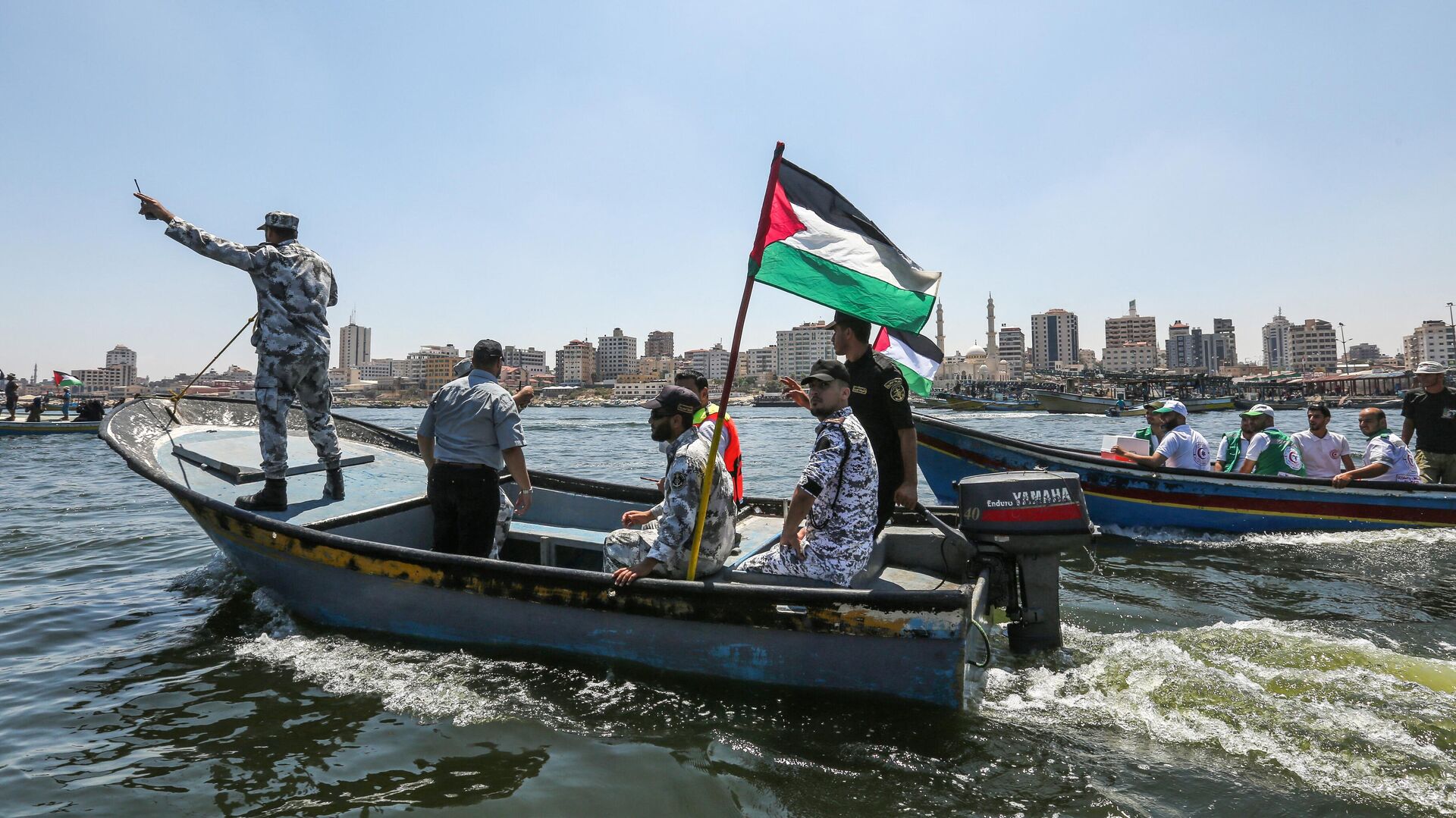
A boat carrying members of Hamas' marine police launches out to sea escorting a blockade-running boat carrying Palestinian students and others injured during protests from the Gaza City harbor on July 10, 2018.
© AFP 2023 / MAHMUD HAMS
International donors primarily direct financial aid to the West Bank, while the remaining assistance packages, flowing into the Gaza Strip, primarily consist of humanitarian aid. In 2020, 77% of households in the Gaza Strip received assistance in the form of food and cash transfers, mainly through the UN Relief and Works Agency for Palestine Refugees in the Near East (UNRWA), as per the International Monetary Fund's (IMF) September report. The Gaza Strip is heavily dependent on supplies from Israel, Egypt, and international humanitarian aid. The largest donor for the Palestinians is Europe.
The ongoing Gaza war has already dealt a heavy blow to its infrastructure, undermining the region's ability for further development. Between 40% and 51% of all buildings in northern Gaza have been damaged since the beginning of Israel's military operation against Hamas, according to some estimates. Likewise, the ongoing strife may hinder the works at Gaza Marine – a Palestinian offshore gas deposit – and delay the commissioning of the Jenin Power Plant, thus hindering Palestine's economic development.

